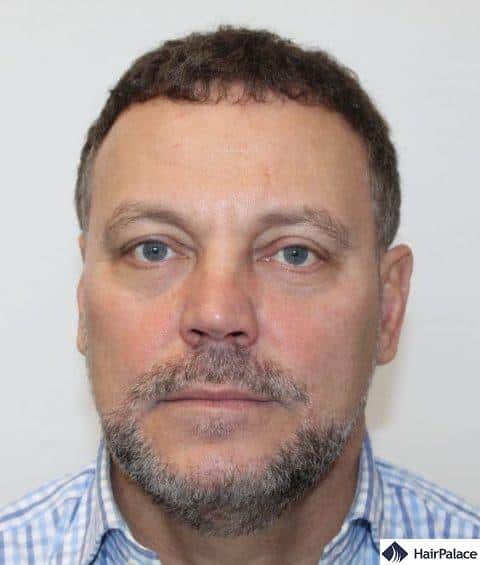Hairline Restoration with Hair Transplant – Valko’s Case
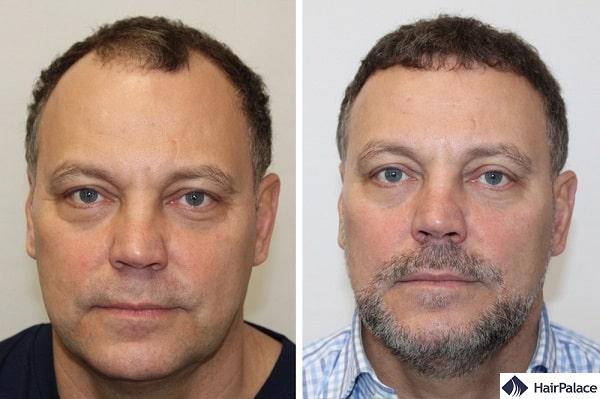
Valko attended a personal consultation in Budapest on the 24th of October 2017.
During the examination, he explained that his priority would be to restore the hairline and fill the frontal area.
The doctor thoroughly examined the density of his hair and the condition of his scalp. Then she drew and discussed the approximate hairline Valko had in mind.
The doctor found that his donor area allows the necessary number of hairs to be extracted to build out the hairline. She made him a treatment plan proposing 6000 hairs and summarizing the discussed details.
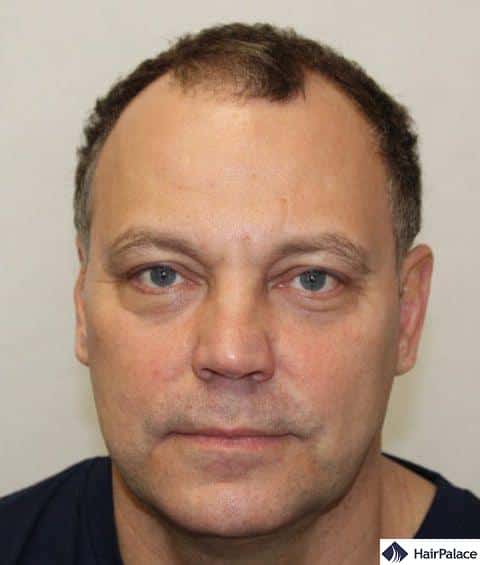
Transplanting 6000 hairs is a 2-day procedure with around 7 hours of surgery on each day. Valko had the time to undergo his surgery just before the Christmas holiday – he had his procedure on the 19-20th of December 2017.
The hair transplant surgery day has two larger, distinct phases. The first is the extraction when the donor hairs are harvested, followed by the second stage, the implantation.
Before the implantation starts on the first surgery day, the hairline is thoroughly discussed – the surgeons draw and redraw the line until it matches the patient’s expectations precisely.
This step is crucial because after numbing the scalp at the front with the lidocaine injections, it is not possible to change the male hairline.
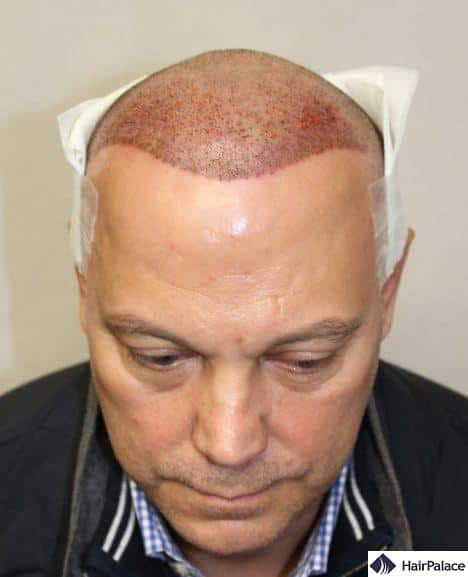
The first post-op week is really important for a good result. In this period:
- the scalp cannot be touched or washed
- sterile saline solution must be sprayed on the implanted area hourly during the day
- antibiotics must be taken.
By the end of the 1st post-op week the swelling and the large majority of the redness is gone:
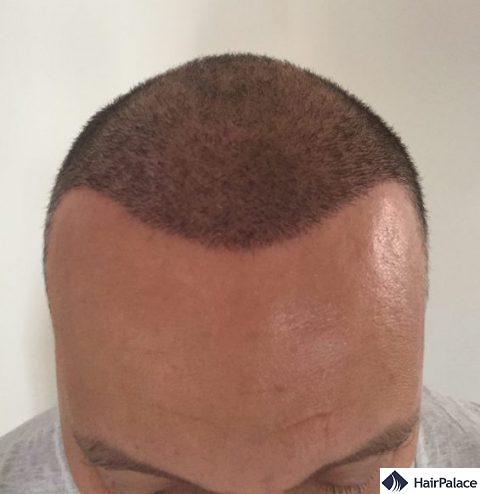
During the 2nd post-op week, clean tap water must be used to gently soak the small crusts off, and baby shampoo must be used from the 3rd post-op week.
3 weeks after the surgery the scalp must be free of scabs, but the implanted hairs should be in place.
Between the 4th and the 12th post-op week, the transplanted hairs gradually fall out.
As a result, 3 months after the surgery the recipient area typically looks the same as before.
However, in Valko’s case, this part of the process happened quicker. On his check-up photo, many hairs are visible on the implanted area, though with a lower density:
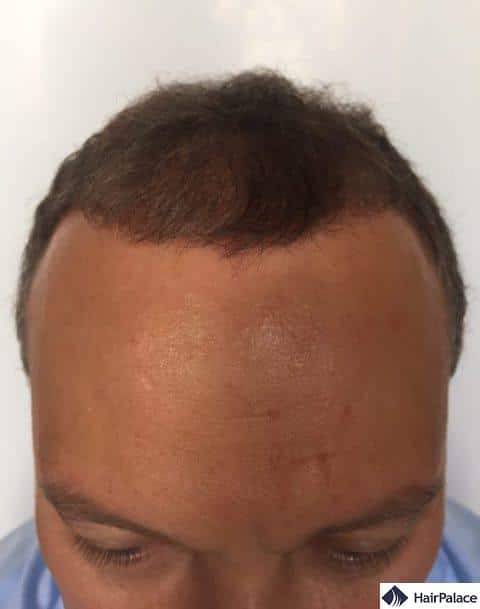
Usually, the growth of the new hairs start from the 4th post-op month, and about 50-60% of the new hairs grow out by the 6th post-op month.
The density has improved in Valko’s case as well by the 6th month’s check-up:
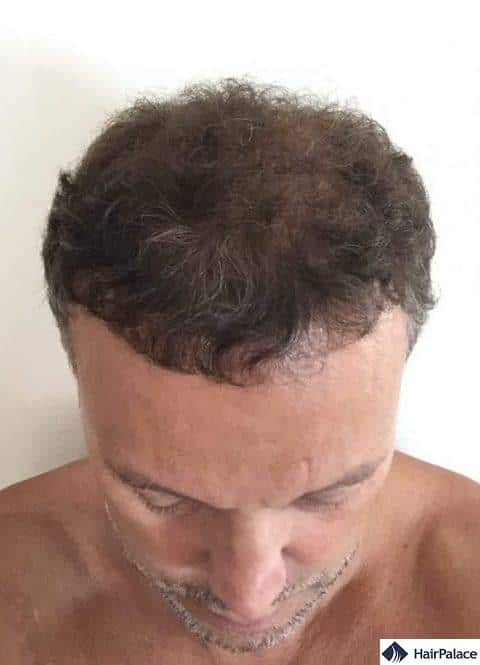
The final result of the hair transplant can be expected 12 months after the surgery.
As the transplanted hairs keep their original qualities – their colour, texture etc. – they blend in with the non-transplanted hairs.
And after scalp healed up, the transplanted hairs can be cut, styled or even coloured just the same as the rest of the hair!
